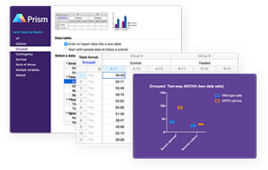It’s About Time
A new data acquisition paradigm
“Happy Nu (?) Year!” Yeah, that’s an oldie and not very goodie. I guess the years spent in a darkened laser lab often increase the perceived humor of low wit. Upon reaching the end of our unit on optics each year, I try out the hilarity of “What’s new?” — Answer: “c/?” on my class and I get the same crickets I am hearing now. All groaning aside, the relationship between frequency, nu (?) , wavelength, lambda (?), and the propagation speed of a radiating energy wave, (c) is the foundational model for a large number of processes.
Other models of force, absorption, voltage and resistance permit the design of robust transducers and sensors for the measurement of many physical quantities. Unfortunately, as these quantities are affected by multiple processes simultaneously, data acquisition is often limited by selectivity. If many people are conversing loudly in a conference hall, it is difficult to listen to a single speaker from across the room. Sensitivity and detection limit are of concern also, as it doesn’t matter that everyone else is silent if our ears are not able to detect a soft-spoken whisper. Measuring the presence and identity of a chemical compound can be achieved by any number of laboratory instruments, but our current technology often requires the use of separation science, such as chromatography or extraction, so that other signals do not overwhelm our target measurement.
Another method used for signal isolation is to transform it into a less populated, and thereby, a more quiet, dimension. These are not fictional screenwriter dimensions, but physical engineering dimensions such as energy, space and time. In the case of optical absorption spectroscopy, the absorption of a single component contained in a sample of many colored compounds can be isolated by the careful selection of the frequency or wavelength of light used for the analysis. With the aid of an optical chopper, the frequency of the absorption measurement can be moved to a quieter region of the noise spectrum. Cavity ring-down (CRD) absorption spectroscopy transforms intensity-modulation into a measurement of signal decay time. Rather than dealing with the noise inherent in a system used to measure a miniscule decrease in a bright light due to sample absorption, CRD uses an intensity detector that measures the amount of light that leaks out of a resonant optical cavity as a function of time. The natural decay time of the cavity depends on the efficiency of the reflective end mirrors, and is in a separate measurement dimension than the intensity noise of the light source. When an absorption sample is placed into the CRD cavity, the observed decay time is decreased due to the additional loss of energy to the sample.
Arik Ariav, a mechanical engineer and founder of Nexense, has made a large splash in the data acquisition community with the introduction of his recently patented measurement methodology known as frequency change by wavelength control (FCWC). Analogous to the CRD technique, the FCWC uses a resonance cavity embedded into a digital circuit. Instead of optical mirrors, the cavity is formed between a transmitter and receiver, and the transit time of a propagating energy wave is measured continuously. Rather than attempting to measure the transit time directly at a resolution of a few picoseconds, the cavity serves as a delay line in the feedback loop of an operational amplifier. Similar to an optical laser cavity, a resonant wave is established within the electronic circuit as the energy leaves the transmitter, transverses the cavity medium, enters the receiver and is subsequently amplified. The frequency and phase of the resulting standing wave depend on its propagation time through the medium, thereby converting transit time and distance into frequency. The circuit frequency is compared to that of an internal reference clock and the differences are integrated over a specified time to increase the signal-to-noise ratio (SNR).
If a sample is placed in the cavity (or if the transmitter and receiver are placed on the sample to form a cavity), any change in cavity length or speed of energy wave propagation will be detected by the ensuing frequency change of the circuit. Nexense reports that physical changes to the sample induced by (in alphabetical order) acceleration, angular velocity, density, distance, displacement, elasticity, flow, mass, pressure, shape, strain, temperature, tilt, torque, vibration, viscosity, volume and weight can be accurately measured by FCWC with a SNR approaching 190 dB. This is quite a hefty claim in an industry that utilizes specialized sensors having unique response and noise characteristics. Also, Nexense does not specifically address problems of selectivity that plague other highly sensitive techniques. Regardless of the selectivity issue, recent Nexense patent applications describe sensors for measuring the weight of an automobile passenger to determine airbag deployment and an apparatus for non-invasively monitoring blood glucose concentration in vivo by using FCWC to monitor the photoacoustic effect.
This new technology sounds overly optimistic of its ease of application; however, with recently announced partnerships with Timex, Fujitsu and others, only time will tell.
Bill Weaver is an assistant professor in the Integrated Science, Business and Technology Program at La Salle University. He may be contacted at [email protected]




